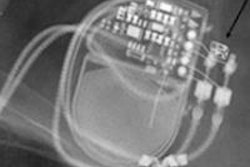Dear AuntMinnieEurope Member,
Not so long ago, errors were a taboo subject in radiology. When they were made, it was felt they had to be discussed behind closed doors. Often, radiologists' mistakes were swept under the carpet.
Thankfully, times have changed, and now errors are discussed much more openly, both in hospitals and at congresses and workshops. Most people realize mistakes happen, and they can only be avoided by addressing the root causes.
At ECR 2017, a team of researchers from Madrid explained how they minimize errors. They had a set of general recommendations and also some pearls for head and neck imaging. To find out more, click here.
Structured reports were another hot topic during the recent congress in Vienna. Researchers from Dublin shared their experiences and spelled out precisely why these reports appear to represent the future. Go to our Imaging Informatics Community, or click here.
Widespread confusion exists as to when women should start mammography screening. Scientific studies lack consensus, and different countries and regulators advocate various ages. Against this background, a new survey of Swiss women is bound to generate attention. Visit the Women's Imaging Community, or click here.
Meanwhile, U.K. researchers have tried to establish whether the addition of digital breast tomosynthesis (DBT) can improve the performance of readers with different levels of mammographic experience. They assessed whether the improved reader performance seen overall with the addition of DBT to 2D mammography varies with reader experience when viewing 2D mammograms. Get the full details here.
In another women's imaging story, Norwegian researchers found compression matters in breast screening. They categorized compression force and pressure of more than 261,000 mammography exams to determine performance measures such as recall rate, sensitivity, specificity, and positive predictive value. Discover what they found.
In Germany, cardiologists and radiologists have forgotten their differences and worked together on developing a strategy for conducting MRI exams of cardiac implants. For an interview with leading expert Dr. Torsten Sommer, go to the Cardiac Imaging Community, or click here.



















